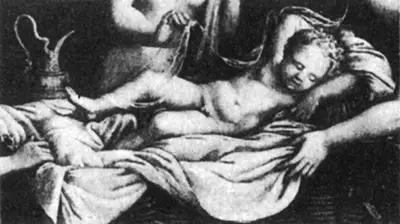The piece itself was sold to Italian art dealer Baldassare del Milanese, and then it was passed onto Cardinal Riario of San Giorgio. Controversy arose when it was determined that Michelangelo had artifically aged the sculpture using acid, which essentially was considered a form of fraud at the time and so the new owner was upset and demanded his money be returned. It is important not to judge a young Michelangelo too harshly for this action, though, as it was believed to have been suggested to him as a means to promote his own career. Lorenzo di Pierfrancesco believed that aging the item could benefit them both, and perhaps the normally strong willed Michelangelo may have been somewhat more impressionable in this early stage of his career. Interestingly, Michelangelo asked if he could have the sculpture back and Baldassarre reacted angrily, threatening to destroy the piece out of revenge for his loss of reputation and also the financial damage caused by this deceit.
Sadly, it is believed that the piece was destroyed in a fire in the Palace of Whitehall, London, in around 1698. Charles I had earlier purchased a large amount of Italian art which was then ported over to the UK, with much of it still remaining there today and helping the nation to put together some of the finest displays of Renaissance art anywhere in the world, even though the country itself was not a major artistic force until several centuries later with the likes of Turner and Constable. Some have also become aware of the reign of this monarch via some of the portraits of him produced by Anthony van Dyck, such as Charles I at the Hunt and Charles in Three Positions. He was a huge lover of the arts and spend considerable amounts of the nation's money on building up an impressive art collection, which today would be far harder to gain acceptance on.
The piece therefore becomes known as one of the artist's lost items, which is a crying shame considering how it offers us an insight into the very early years of his career. That said, the use of acid makes it perhaps less popular than his later pieces. The fire, being so long ago, has meant that insufficient documentation is available on the piece than if it had been lost more recently, in which cases there may have been photographs available and we would have understood so much more about it. Fires are part of history, sadly, but better efforts are made these days to avoid losing such valuable assets in the future, such as protective elements around fragile items and more effective systems for dealing with such instances. Architecture is also very different today and less likely to spread fire so quickly and uncontrollably than it would have been back in the seventeenth century.


